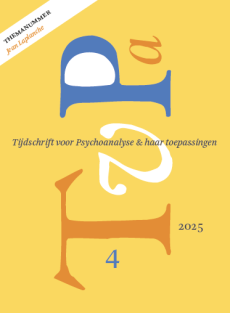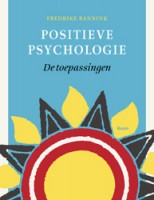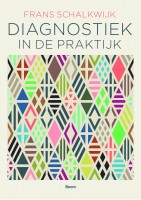Psychoanalytische en psychiatrische diagnostiek bij persoonlijkheidsstoornissen
Summary
A theoretical frame of reference for the psychoanalytical diagnosis for personality disorders is described, making it possible to place personality disorders on a spectrum between neurosis and psychosis. The application of this frame of reference to the descriptive categories of the DSM-IV Axis II achieves a double goal. From a psychoanalytical point of view, the different external appearances of a similar intrapsychic functioning become clear. From a psychiatric point of view, the description of the psychodynamic functioning behind the different DSM-IV Axis II categories adds depth to the descriptive approach.
Keywords
diagnosis, personality disorder, psychoanalysis
Literatuur
- Akhtar, S. (1992). Severe Personality Disorders and their Treatment. New York: Jason Aronson.
- American Psychiatric Association (APA) (1980). Diagnostic and statistical manual of mental disorders. Third Edition. DSM-III. Washington DC: American Psychiatric Association.
- American Psychiatric Association (APA) (1994). Diagnostic and statistical manual of mental disorders. Fourth Edition. DSM-IV. Washington DC: American Psychiatric Association.
- Balint, M. (1968). The Basic fault. Therapeutic Aspects of Regression. Londen: Tavistock Publications.
- Bateman, A., & Fonagy, P. (1999). Effectiveness of partial hospitalisation in the treatment of borderline personality disorder: a randomised controlled trial. American Journal of Psychiatry 156, 1563-1569.
- Bion, W.R. (1962). A theory of thinking. In W.R. Bion, Second thoughts (pp 110-119). New York: Jason Aronson.
- Gabbard, G.O. (1994). Psychodynamic Psychiatry in Clinical Practice. Washington: American Psychiatric Press.
- Green, A. (1997). Le Chiasme. Prospective, les cas-limites vus depuis l’hystérie. Rétrospective, l’hystérie vue depuis les cas-limites. Psychanalyse en Europe, 49, 28-47.
- Kernberg, O.R (1984). Severe Personality Disorders. New Haven: Yale University Press.
- Kernberg, O.F. (1996). A psychoanalytic theory of personality disorders. In J.R Clarkin, M.F. Lenzenweger, Major theories of personality disorders (pp 103-137). New York: Guilford Press.
- Klein, M. (1932). The psychoanalysis of children. Londen: Hogarth Press.
- Klein, M. (1946). Notes on some schizoid mechanisms. In The Writings of Melanie Klein. Volume 3: Envy and Gratitude (pp 1-24). Londen: Hogarth Press.
- Kohut, H. (1971). The analysis of the Self New York: International University Press.
- Mahler, M.S. (1968). On Human Symbiosis and the Vicissitudes of Individuation, Infantile Psychosis. New York: International University Press.
- Masterson, J.F. (1993). The Emerging Self. New York: Brunner Mazel Inc.
- Millon, T. (1969). Modern Psychopathology. Londen: W.B. Saunders Co.
- Pierloot, R.A. (1985). Psychiatrie et psychanalyse. Différences et points de convergence quant à la notion de diagnostic. Revue Belge de Psychanalyse, 7, 91-103.
- Rosenfeld, H. (1987). Impasse and Interpretation. Londen: Tavistock Publications.
- Steiner, J. (1993). Psychic Retreats. Londen: Routledge.
- Stern, D.N. (1985). The Interpersonal World of the Infant. New York: Basic Books.
- Tustin, R (1986). Autistic barriers in neurotic patients. Londen: Karnac.
- Vermote, R. (1995a). Réalités psychiques et formes. Revue Belge de Psychanalyse, 27, 39-55.
- Vermote, R. (1995b). Inleiding. In M. Thys en R. Vermote (red.), Trauma en taboe (pp 7-19). Leuven/Apeldoorn: Garant.
- Vermote, R., & Vansina-Cobbaert, M.J. (1998). A psychoanalytic hospital unit for people with severe personality disorders. In J. Pestalozzi, S. Frisch., R.D. Hinshelwood e.a. (Red.), Psychoanalytic Psychotherapy in Institutional Settings (pp 75-93). Londen: Karnac Books.
- Vermote, R, & Auwerkerken, F. (1999). Een structured diagnostische benadering van de DSM IV as II persoonlijkheidsstoornissen. Diagnostiek Wijzer, 4, 171-184.
- Winnicott, D.W. (1967). Mirror-role of Mother and Family in Child Development. In D.W. Winnicott, Playing and Reality (130-139). Hammersworth: Penguin Books.
 © 2009-2025 Uitgeverij Boom Amsterdam
© 2009-2025 Uitgeverij Boom Amsterdam
ISSN 1382-516x
De artikelen uit de (online)tijdschriften van Uitgeverij Boom zijn auteursrechtelijk beschermd. U kunt er natuurlijk uit citeren (voorzien van een bronvermelding) maar voor reproductie in welke vorm dan ook moet toestemming aan de uitgever worden gevraagd:
Behoudens de in of krachtens de Auteurswet van 1912 gestelde uitzonderingen mag niets uit deze uitgave worden verveelvoudigd, opgeslagen in een geautomatiseerd gegevensbestand, of openbaar gemaakt, in enige vorm of op enige wijze, hetzij elektronisch, mechanisch door fotokopieën, opnamen of enig andere manier, zonder voorafgaande schriftelijke toestemming van de uitgever.
Voor zover het maken van kopieën uit deze uitgave is toegestaan op grond van artikelen 16h t/m 16m Auteurswet 1912 jo. Besluit van 27 november 2002, Stb 575, dient men de daarvoor wettelijk verschuldigde vergoeding te voldoen aan de Stichting Reprorecht te Hoofddorp (postbus 3060, 2130 KB, www.reprorecht.nl) of contact op te nemen met de uitgever voor het treffen van een rechtstreekse regeling in de zin van art. 16l, vijfde lid, Auteurswet 1912.
Voor het overnemen van gedeelte(n) uit deze uitgave in bloemlezingen, readers en andere compilatiewerken (artikel 16, Auteurswet 1912) kan men zich wenden tot de Stichting PRO (Stichting Publicatie- en Reproductierechten, postbus 3060, 2130 KB Hoofddorp, www.cedar.nl/pro).
No part of this book may be reproduced in any way whatsoever without the written permission of the publisher.
Nieuwsbrief Boom Psychologie
Meld u nu aan en ontvang maandelijks de Boom Psychologie nieuwsbrief met aantrekkelijke aanbiedingen en de nieuwe uitgaven.
Aanmelden


